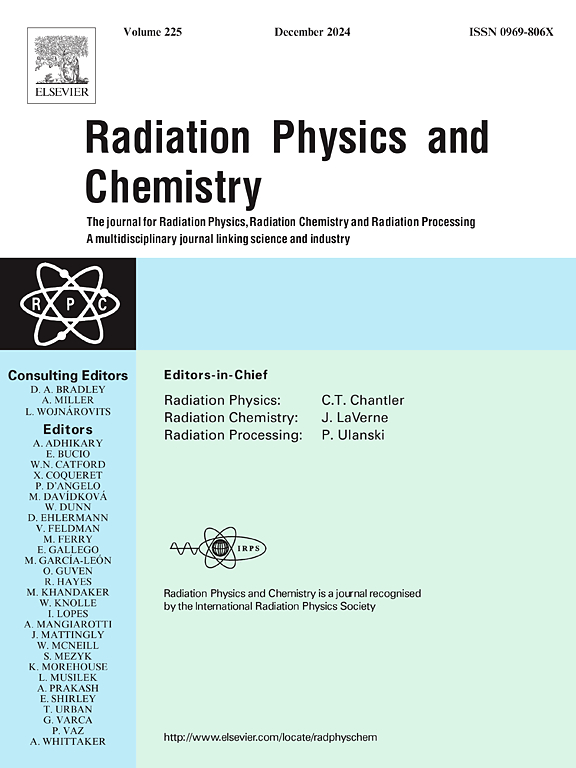烷基取代基对烷基水杨酸盐辐射分解转化的影响
IF 2.8
3区 物理与天体物理
Q3 CHEMISTRY, PHYSICAL
引用次数: 0
摘要
烷基水杨酸盐能够从各种来源的溶液中选择性地提取锂。本文研究了水杨酸烷基酯的抗辐射能力。水杨酸甲酯(MS)和水杨酸 2-乙基己酯(EHS)辐射降解的初始产率分别为 100 nmol J-1 和 166 nmol J-1,而产物的总产率分别为 105 nmol J-1 和 236 nmol J-1。MS 的放射性分解主要产生苯环的甲基加合物,而 EHS 的放射性分解则产生脂肪族碳氢化合物。在这两种水杨酸盐中,羟基的位置会发生变化或出现第二个羟基。EHS 中羧基的降解和 CO 的消除更为有效。MS 中的主要含氧产物是水杨酸,而 EHS 中的主要含氧产物是 2-乙基己醇-1。MS 中的二聚体主要含有苯环之间的 C-C 桥,而 EHS 中则含有烷基之间的桥。本文章由计算机程序翻译,如有差异,请以英文原文为准。
Effect of alkyl substituent on radiolytic transformations of alkyl salicylates
Alkyl salicylates are capable of selectively extracting lithium from solutions of various origins. This paper examines the radiation resistance of alkyl salicylates. The initial yield of radiolytic degradation of methyl salicylate (MS) and 2-ethylhexyl salicylate (EHS) is 100 and 166 nmol J−1, while the total yield of products is 105 and 236 nmol J−1, respectively. Radiolysis of MS produces predominantly methyl adducts to the benzene ring, while radiolysis of EHS produces aliphatic hydrocarbons. In both salicylates, the position of the OH group changes or a second OH group appears. Degradation of the carboxyl group and elimination of CO in EHS occurs much more efficiently. The main oxygen-containing product in MS is salicylic acid, and in EHS it is 2-ethylhecanol-1. Dimers in MS contain predominantly C–C bridges between benzene rings, while in EHS they contain bridges between alkyl groups.
求助全文
通过发布文献求助,成功后即可免费获取论文全文。
去求助
来源期刊

Radiation Physics and Chemistry
化学-核科学技术
CiteScore
5.60
自引率
17.20%
发文量
574
审稿时长
12 weeks
期刊介绍:
Radiation Physics and Chemistry is a multidisciplinary journal that provides a medium for publication of substantial and original papers, reviews, and short communications which focus on research and developments involving ionizing radiation in radiation physics, radiation chemistry and radiation processing.
The journal aims to publish papers with significance to an international audience, containing substantial novelty and scientific impact. The Editors reserve the rights to reject, with or without external review, papers that do not meet these criteria. This could include papers that are very similar to previous publications, only with changed target substrates, employed materials, analyzed sites and experimental methods, report results without presenting new insights and/or hypothesis testing, or do not focus on the radiation effects.
 求助内容:
求助内容: 应助结果提醒方式:
应助结果提醒方式:


